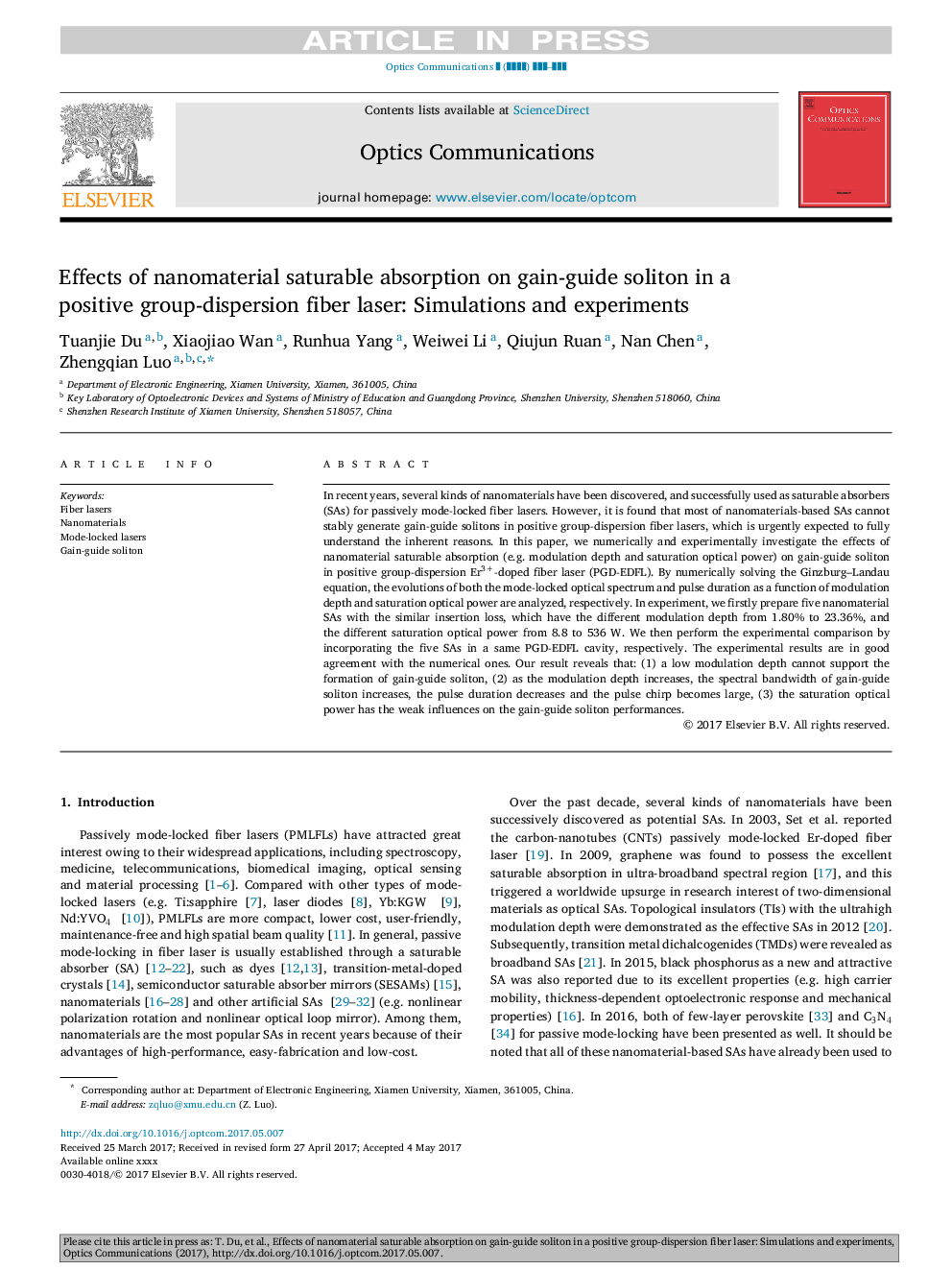| Article ID | Journal | Published Year | Pages | File Type |
|---|---|---|---|---|
| 7926668 | Optics Communications | 2018 | 6 Pages |
Abstract
In recent years, several kinds of nanomaterials have been discovered, and successfully used as saturable absorbers (SAs) for passively mode-locked fiber lasers. However, it is found that most of nanomaterials-based SAs cannot stably generate gain-guide solitons in positive group-dispersion fiber lasers, which is urgently expected to fully understand the inherent reasons. In this paper, we numerically and experimentally investigate the effects of nanomaterial saturable absorption (e.g. modulation depth and saturation optical power) on gain-guide soliton in positive group-dispersion Er3+-doped fiber laser (PGD-EDFL). By numerically solving the Ginzburg-Landau equation, the evolutions of both the mode-locked optical spectrum and pulse duration as a function of modulation depth and saturation optical power are analyzed, respectively. In experiment, we firstly prepare five nanomaterial SAs with the similar insertion loss, which have the different modulation depth from 1.80% to 23.36%, and the different saturation optical power from 8.8 to 536 W. We then perform the experimental comparison by incorporating the five SAs in a same PGD-EDFL cavity, respectively. The experimental results are in good agreement with the numerical ones. Our result reveals that: (1) a low modulation depth cannot support the formation of gain-guide soliton, (2) as the modulation depth increases, the spectral bandwidth of gain-guide soliton increases, the pulse duration decreases and the pulse chirp becomes large, (3) the saturation optical power has the weak influences on the gain-guide soliton performances.
Related Topics
Physical Sciences and Engineering
Materials Science
Electronic, Optical and Magnetic Materials
Authors
Tuanjie Du, Xiaojiao Wan, Runhua Yang, Weiwei Li, Qiujun Ruan, Nan Chen, Zhengqian Luo,
